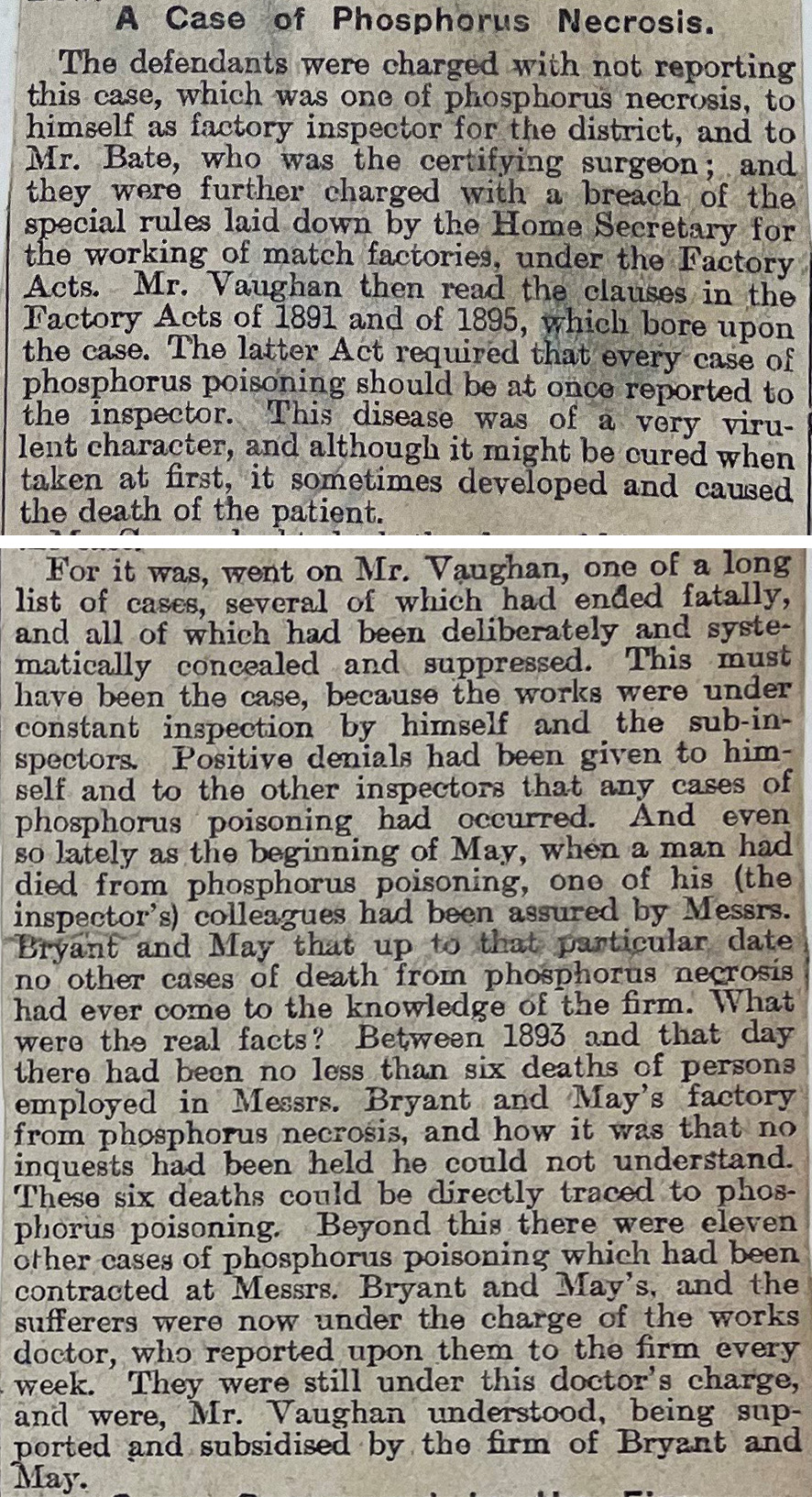
Extracts from an article from a newspaper entitled ‘The Daily Chronicle’ describing a case of ‘phossy jaw’, 2 June 1898, Catalogue ref: HO 45/9849/B12393D.
Transcript
[Necrosis means the death of living tissue in a particular area of the body through injury or disease.]
A Case of Phosphorus Necrosis
The defendants were charged with not reporting this case, which was one of phosphorus necrosis, to himself as factory inspector for the district, and to Mr. Bate, who was the certifying surgeon; and they were further charged with a breach [break in the law] of the special rules laid down by the Home Secretary for the working of match factories, under the Factory Acts. Mr. Vaughan then read the clauses in the Factory Acts of 1891 and 1895, which bore upon the case. The latter Act required that every case of phosphorus poisoning should be at once reported to the inspector. This disease was of a very virulent [life threatening] character, and although it might be cured when taken at first, it sometimes developed and caused the death of the patient.
.…
For it was, went on Mr. Vaughan, one of a long list of cases, several of which had ended fatally, and all of which had been deliberately and systematically concealed and suppressed. This must have been the case, because the works were under constant inspection by himself and the sub-inspectors. Positive denials had been given to himself and to other inspectors that any cases of phosphorus poisoning had occurred. And even so lately as the beginning of May, when a man had died from phosphorous poisoning, one of his (the inspector’s) colleagues had been assured by Messrs. Bryant and May that up to that particular date no other cases of death from phosphorus necrosis had ever come to the knowledge of the firm. What were the real facts? Between 1893 and that day there had been no less than six deaths of persons employed in Messrs. Bryant and May’s factory from phosphorus necrosis, and how it was that no inquests had been held he could not understand. These six deaths could be directly traced to phosphorus poisoning. Beyond this there were eleven other cases of phosphorus poisoning which had been contracted at Messrs. Bryant and May’s, and the sufferers were now under the charge of the works doctor, who reported upon them to the firm every week. They were still under this doctor’s charge, and were, Mr. Vaughan understood, being supported and subsidised by the firm of Bryant and May.
…
Sources 3a – e: Read these extracts from ‘The Daily Chronicle’ describing a case of ‘phossy jaw’.
Phosphorus is a chemical that glows in the dark and burns easily, which is why it was used to make matches.
- What was ‘phossy jaw’?
- Why is this newspaper reporting a story about phosphorus poisoning at the Bryant & May factory?
- How had ‘phossy jaw’ affected the workers?
- Do you think the result of the trial was a fair one?
- If the firm Bryant & May knew about the problem of ‘phossy jaw’, why do you think they tried to keep it quiet for as long as they did?
- How have these events been reported in this newspaper?
- Why was the match girls’ strike and the development of ‘new unionism’ important in the context of the information provided by this source?
